Vaccine-induced antibody isotypes are skewed by impaired CD4 T cell and invariant NKT cell effector responses in MyD88-deficient mice
- PMID: 19620295
- PMCID: PMC4454352
- DOI: 10.4049/jimmunol.0804011
Vaccine-induced antibody isotypes are skewed by impaired CD4 T cell and invariant NKT cell effector responses in MyD88-deficient mice
Abstract
The requirement for TLR signaling in the initiation of an Ag-specific Ab response is controversial. In this report we show that a novel OVA-expressing recombinant Salmonella vaccine (Salmonella-OVA) elicits a Th1-biased cell-mediated and serum Ab response upon oral or i.p. immunization of C57BL/6 mice. In MyD88(-/-) mice, Th1-dependent Ab responses are greatly reduced while Th2-dependent Ab isotypes are elevated in response to oral and i.p., but not s.c. footpad, immunization. When the T effector response to oral vaccination is examined we find that activated, adoptively transferred Ag-specific CD4(+) T cells accumulate in the draining lymph nodes, but fail to produce IFN-gamma, in MyD88(-/-) mice. Moreover, CD1d tetramer staining shows that invariant NKT cells are activated in response to oral Salmonella-OVA vaccination in wild-type, but not MyD88(-/-), mice. Treatment with neutralizing Ab to CD1d reduces the OVA-specific Ab response only in MyD88-sufficient wild-type mice, suggesting that both Ag-specific CD4 T cell and invariant NKT cell effector responses to Salmonella-OVA vaccination are MyD88 dependent. Taken together, our data indicate that the type of adaptive immune response generated to this live attenuated vaccine is regulated by both the presence of MyD88-mediated signals and vaccination route, which may have important implications for future vaccine design.
Conflict of interest statement
The authors have no financial conflicts of interest.
Figures


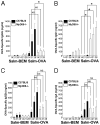
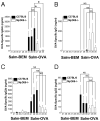
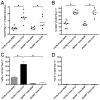
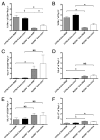
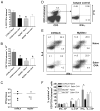
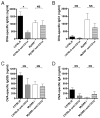
Similar articles
-
MyD88 signaling is not essential for induction of antigen-specific B cell responses but is indispensable for protection against Streptococcus pneumoniae infection following oral vaccination with attenuated Salmonella expressing PspA antigen.J Immunol. 2008 Nov 1;181(9):6447-55. doi: 10.4049/jimmunol.181.9.6447. J Immunol. 2008. PMID: 18941235 Free PMC article.
-
NKT cell-dependent regulation of secondary antigen-specific, conventional CD4+ T cell immune responses.J Immunol. 2010 May 15;184(10):5589-94. doi: 10.4049/jimmunol.0903121. Epub 2010 Apr 7. J Immunol. 2010. PMID: 20375305
-
Innate immunity mediated by MyD88 signal is not essential for induction of lipopolysaccharide-specific B cell responses but is indispensable for protection against Salmonella enterica serovar Typhimurium infection.J Immunol. 2009 Feb 15;182(4):2305-12. doi: 10.4049/jimmunol.0801980. J Immunol. 2009. PMID: 19201885 Free PMC article.
-
Intestinal Helminth Infection Impairs Oral and Parenteral Vaccine Efficacy.J Immunol. 2023 Aug 1;211(3):389-402. doi: 10.4049/jimmunol.2300084. J Immunol. 2023. PMID: 37272847 Free PMC article.
-
Salmonella as a vaccine delivery vehicle.Expert Rev Vaccines. 2013 Sep;12(9):1033-45. doi: 10.1586/14760584.2013.825454. Expert Rev Vaccines. 2013. PMID: 24053397 Free PMC article. Review.
Cited by
-
Activation of invariant NK T cells in periodontitis lesions.J Immunol. 2013 Mar 1;190(5):2282-91. doi: 10.4049/jimmunol.1201215. Epub 2013 Jan 30. J Immunol. 2013. PMID: 23365081 Free PMC article.
-
Lipid motif of a bacterial antigen mediates immune responses via TLR2 signaling.PLoS One. 2011;6(5):e19781. doi: 10.1371/journal.pone.0019781. Epub 2011 May 17. PLoS One. 2011. PMID: 21611194 Free PMC article.
-
The innate immune adaptor molecule MyD88 restricts West Nile virus replication and spread in neurons of the central nervous system.J Virol. 2010 Dec;84(23):12125-38. doi: 10.1128/JVI.01026-10. Epub 2010 Sep 29. J Virol. 2010. PMID: 20881045 Free PMC article.
-
Sampling of the intestinal microbiota by epithelial M cells.Curr Gastroenterol Rep. 2010 Oct;12(5):331-9. doi: 10.1007/s11894-010-0128-x. Curr Gastroenterol Rep. 2010. PMID: 20706806 Review.
-
TLR4 signaling via MyD88 and TRIF differentially shape the CD4+ T cell response to Porphyromonas gingivalis hemagglutinin B.J Immunol. 2011 May 15;186(10):5772-83. doi: 10.4049/jimmunol.1003192. Epub 2011 Apr 15. J Immunol. 2011. PMID: 21498664 Free PMC article.
References
-
- Akira S, Uematsu S, Takeuchi O. Pathogen recognition and innate immunity. Cell. 2006;124:783– 801. - PubMed
-
- Krieg AM. Toll-free vaccines? Nat Biotechnol. 2007;25:303–305. - PubMed
-
- Lanzavecchia A, Sallusto F. Toll-like receptors and innate immunity in B-cell activation and antibody responses. Curr Opin Immunol. 2007;19:268–274. - PubMed
-
- Pulendran B. Tolls and beyond: many roads to vaccine immunity. N Engl J Med. 2007;356:1776–1778. - PubMed
-
- Wickelgren I. Immunology: mouse studies question importance of Toll-like receptors to vaccines. Science. 2006;314:1859–1860. - PubMed
Publication types
MeSH terms
Substances
Grants and funding
LinkOut - more resources
Full Text Sources
Other Literature Sources
Molecular Biology Databases
Research Materials

